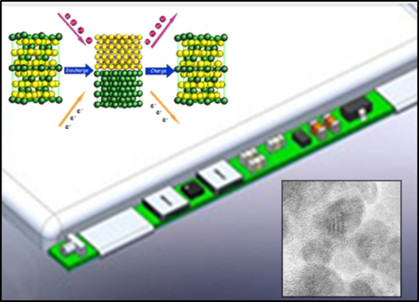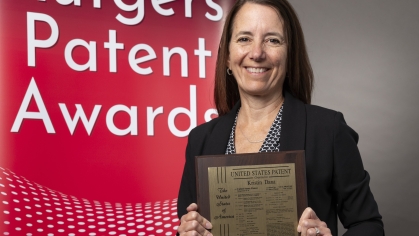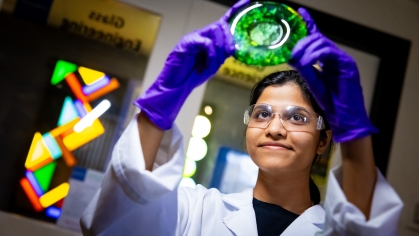RU Team Selected to Lead Development of a Next Generation, High Performance Battery Technology
Unmanned aerial vehicles (UAVs), or drones, are increasingly deployed on surveillance missions to safeguard troops and intelligence personnel. Yet the batteries that power them are not able to sustain flights in extreme conditions.
The Office of the Director of National Intelligence’s research and development arm—Intelligence Advanced Research Projects Activity (IARPA)—invests in programs that address vexing intelligence community challenges.

In October 2021, IARPA launched its Robust Energy Sources for Intelligence Logistics in Extreme, Novel and Challenging Environments, or RESILIENCE program, managed by Dr. Dawson Cagle. The four-year program’s mission is to develop dependable, novel portable power solutions to extend the run-times of UAVs operating in extreme conditions.
As part of this effort, IARPA awarded Glenn Amatucci, a professor in the Department of Materials Science and Engineering and director of the School of Engineering’s Energy Storage Research Group, a $10.2 million RESILIENCE research contract to develop powerful new battery cells using rechargeable lithium metal, novel electrode materials and advanced electronics.
A More Powerful Battery
“Our goal is to develop new types of materials that can store more energy by weight and by volume,” Amatucci says. “We want to incorporate as much power and energy into a new battery that would last twice as long and be half the size.”
Amatucci’s Rutgers team is the only university-led team among those awarded RESLIENCE contracts which also includes sub-contractors Lockheed Martin Corporation and The Charles Stark Draper Laboratory, Inc.
The project, according to Amatucci, is like designing a puzzle. “Our piece is developing a new battery. Packaging and electronics are also very important for our battery, and we need to consider everything holistically,” says Amatucci.
Thus, the Draper effort, led by Dr. Robert Doe, will apply its expertise in custom microelectronics and systems integration to support the success of the Rutgers team’s new energy storage vision. Lockheed Martin Corp. will perform environmental evaluations.
Building on the Past
For this program, Amatucci and his Energy Storage Research Group of staff, graduate and undergraduate students have been building on work they performed on a Defense Advanced Research Projects Agency (DARPA) Short-Range Independent Microbiotic Platforms, or SHRIMP, project initially funded in 2018.
"We were one of a select few battery teams working with communications/actuator/ and electronics experts challenged to make small robotic insects that could communicate with each other and go into things like collapsed buildings or other disaster scenarios," Amatucci recalls.
For Amatucci and his team, the IARPA project has three phases. “We’ve completed the first phase and have demonstrated that our chemistries work, and our energy densities meet our goal,” he reports. “We are at phase two and will be scaling the technology into more usable formats.”
Looking Ahead
While the IARPA project’s mission is to fulfill a need for better powered military and intelligence UAVs, Amatucci is quick to note that historically funded projects can eventually trickle down to help society and humanity in general. To that end, tremendous potential exists for future commercialization for use in everything from cell phones and hearing aids to deep brain stimulation and pacemakers.
“Batteries power our lives and transform society,” he says. “Without them, there would be no cell phones, no hearing aids, no electric vehicles.” And the development of a smaller, more powerful battery will further transform the way we live.


